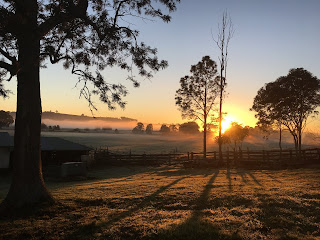Most of the buildings are predominantly concrete. Like the one where I am living ...

The design is typical with shops on the ground level and a couple of apartments above. My room is in the middle level. Can you see my laundry hanging on the top floor balcony?
Here are the girls selling their products in the shop below ...

Here is the cow I see when I look out my side window ... !

The cow belongs to the people who live upstairs ... so we have fresh milk every morning!
Some of the dwellings that were built before the city expanded into the rural area are still inhabited ...

... and draw their water from a well ...

Other houses are still being built. Many of these have a forest of bamboo cane to support each floor level ...

This is what the finished product will probably look like. Note the large puddle of water that has collected during this morning’s downpour of rain. (The monsoon season lasts another 3-4 weeks).

Bamboo supports are also used in buildings with several levels ...

Bricks are often imprinted with a holy symbol; presumably for protection ...

My walks around the area are an interesting rural/urban mix. Here is my favourite road. Let me know if you know what kind of tree is growing.

... and here is a goat grazing the verge ...

Vacant land is often invaded with lantana ... just like in Australia.

The Narayani river runs past the city. Here is a Buddhist shrine with early morning mist over the river ...

This is the Hindu temple, Radha Krishna Mandir, where I attended my first yoga class in Nepal. The class started at 4am!

I will finish with a photo of some Nepali emblems painted on a local school wall.

More ramblings on my wanderings another time ...
Namaste!














